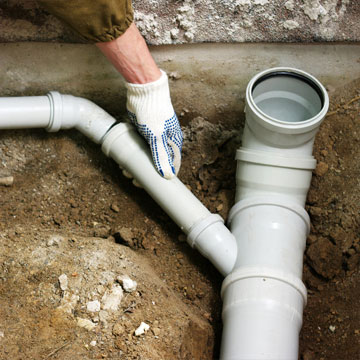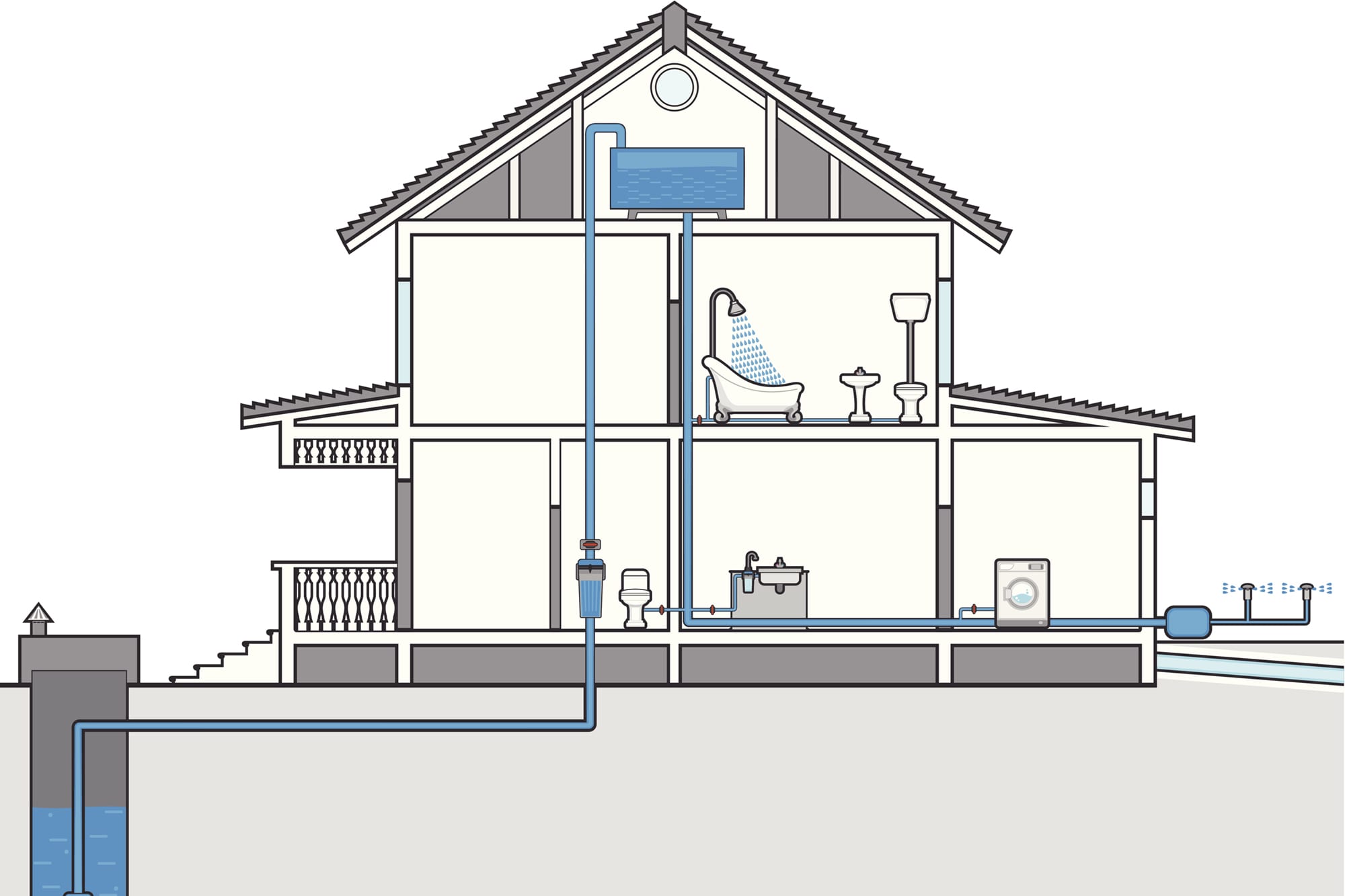Exploring Your Home's Plumbing System Anatomy
Exploring Your Home's Plumbing System Anatomy
Blog Article
We have discovered this article relating to Plumbing Installation 101: All You Need to Know below on the net and thought it made good sense to quickly share it with you on my blog.

Comprehending how your home's pipes system functions is vital for every house owner. From supplying tidy water for alcohol consumption, cooking, and bathing to securely removing wastewater, a properly maintained plumbing system is critical for your household's health and wellness and convenience. In this extensive overview, we'll discover the intricate network that comprises your home's plumbing and offer suggestions on upkeep, upgrades, and handling typical issues.
Intro
Your home's pipes system is more than simply a network of pipes; it's an intricate system that guarantees you have access to clean water and reliable wastewater elimination. Knowing its components and exactly how they collaborate can aid you protect against costly repair services and make certain whatever runs efficiently.
Basic Elements of a Plumbing System
Pipelines and Tubes
At the heart of your plumbing system are the pipelines and tubes that carry water throughout your home. These can be made from numerous products such as copper, PVC, or PEX, each with its benefits in regards to resilience and cost-effectiveness.
Fixtures: Sinks, Toilets, Showers, etc.
Fixtures like sinks, bathrooms, showers, and tubs are where water is utilized in your home. Recognizing how these fixtures attach to the plumbing system assists in diagnosing troubles and planning upgrades.
Valves and Shut-off Factors
Shutoffs regulate the circulation of water in your pipes system. Shut-off shutoffs are essential during emergencies or when you need to make repair work, allowing you to isolate parts of the system without disrupting water circulation to the whole home.
Water System System
Key Water Line
The primary water line links your home to the municipal water system or a personal well. It's where water enters your home and is distributed to various components.
Water Meter and Stress Regulator
The water meter measures your water use, while a pressure regulatory authority makes certain that water streams at a safe pressure throughout your home's pipes system, stopping damages to pipelines and fixtures.
Cold Water vs. Warm water Lines
Comprehending the distinction in between cold water lines, which provide water directly from the primary, and hot water lines, which lug heated water from the water heater, aids in fixing and planning for upgrades.
Drainage System
Drain Pipes Pipeline and Traps
Drain pipes lug wastewater far from sinks, showers, and toilets to the sewer or septic system. Catches stop sewer gases from entering your home and additionally trap debris that can cause blockages.
Ventilation Pipelines
Ventilation pipelines enable air right into the drain system, preventing suction that can slow down drainage and trigger traps to vacant. Proper air flow is important for preserving the integrity of your pipes system.
Importance of Correct Drainage
Making sure appropriate drain stops back-ups and water damages. Frequently cleaning drains pipes and maintaining traps can prevent costly repair services and extend the life of your plumbing system.
Water Furnace
Sorts Of Water Heaters
Water heaters can be tankless or traditional tank-style. Tankless heating units heat water as needed, while storage tanks save heated water for immediate usage.
Updating Your Plumbing System
Reasons for Updating
Updating to water-efficient components or changing old pipelines can improve water quality, lower water expenses, and increase the value of your home.
Modern Pipes Technologies and Their Benefits
Discover modern technologies like clever leak detectors, water-saving toilets, and energy-efficient water heaters that can conserve money and lower ecological effect.
Price Factors To Consider and ROI
Calculate the in advance expenses versus lasting savings when thinking about pipes upgrades. Numerous upgrades spend for themselves with lowered utility bills and fewer repair work.
Just How Water Heaters Attach to the Plumbing System
Comprehending exactly how hot water heater attach to both the cold water supply and warm water distribution lines aids in diagnosing problems like inadequate warm water or leakages.
Maintenance Tips for Water Heaters
Frequently purging your water heater to eliminate debris, examining the temperature level setups, and evaluating for leakages can extend its lifespan and enhance energy effectiveness.
Usual Pipes Issues
Leakages and Their Reasons
Leakages can take place due to aging pipes, loosened fittings, or high water stress. Resolving leaks without delay prevents water damage and mold development.
Clogs and Clogs
Obstructions in drains pipes and commodes are frequently triggered by purging non-flushable things or a build-up of grease and hair. Making use of drain screens and being mindful of what drops your drains can stop clogs.
Indications of Plumbing Problems to Watch For
Low tide pressure, slow-moving drains, foul odors, or uncommonly high water expenses are signs of potential pipes problems that need to be resolved promptly.
Pipes Upkeep Tips
Normal Inspections and Checks
Schedule yearly pipes inspections to catch concerns early. Search for signs of leakages, corrosion, or mineral build-up in taps and showerheads.
Do It Yourself Maintenance Tasks
Basic jobs like cleaning tap aerators, checking for bathroom leakages utilizing dye tablets, or protecting revealed pipes in cold environments can protect against major pipes concerns.
When to Call a Professional Plumbing Technician
Know when a plumbing issue requires expert competence. Trying complicated fixings without correct expertise can bring about even more damages and greater fixing prices.
Tips for Decreasing Water Usage
Straightforward behaviors like dealing with leaks quickly, taking much shorter showers, and running complete loads of laundry and meals can conserve water and reduced your utility expenses.
Eco-Friendly Pipes Options
Think about lasting plumbing products like bamboo for flooring, which is durable and eco-friendly, or recycled glass for countertops.
Emergency situation Preparedness
Steps to Take Throughout a Plumbing Emergency
Know where your shut-off shutoffs are located and exactly how to shut off the water system in case of a burst pipe or significant leak.
Relevance of Having Emergency Get In Touches With Convenient
Maintain contact information for neighborhood plumbings or emergency situation solutions easily offered for fast response throughout a pipes dilemma.
Environmental Effect and Conservation
Water-Saving Components and Home Appliances
Mounting low-flow taps, showerheads, and bathrooms can substantially lower water usage without giving up performance.
Do It Yourself Emergency Fixes (When Appropriate).
Short-term repairs like using air duct tape to spot a dripping pipeline or placing a bucket under a leaking faucet can minimize damages till an expert plumbing arrives.
Verdict.
Recognizing the makeup of your home's pipes system equips you to keep it effectively, conserving time and money on repair services. By following regular upkeep regimens and staying educated concerning contemporary pipes modern technologies, you can ensure your plumbing system runs effectively for several years to find.
Understanding Your Home Plumbing System: A Comprehensive Guide
Plumbing System: The Lifeline of Your Home
At its core, the plumbing system is designed to perform two primary functions: bring fresh water into your home and remove wastewater. The system is a network of pipes, fixtures, and other components that transport water and sewage. Residential plumbing systems include potable water supply lines, drain-waste-vent (DWV) systems, and various plumbing fixtures that make water use in daily tasks possible.
Key Components:
Water Supply: This part of your plumbing system brings municipal water into your home, passing through the main water supply line. It s responsible for supplying all water needs, from drinking to bathing.
Drainage System: It carries waste and water away from your home to the sewer or septic system. This system includes all the piping within your home that leads to external sewage or septic systems.
Vent System: An essential yet often overlooked component, the vent system allows sewer gases to escape and lets air into the drainpipes, ensuring water and waste move correctly through the system.
Fixture: More Than Just Taps and Toilets
Plumbing fixtures are the most interactive parts of the plumbing system, including faucets, showers, toilets, and sinks. Each fixture is connected to the plumbing system and plays a role in either the delivery of freshwater or the disposal of waste and wastewater.
Types of Fixtures:
Faucets and Sinks: Used for washing hands, dishes, and other daily water needs. Toilets: Dispose of human waste through the sewage system. Bathtubs and Showers: Provide bathing facilities, requiring both hot and cold water supply. Water Supply: The Source of Life
The water supply system is a critical component, ensuring that potable water is available throughout your home for various uses, including drinking, cooking, and cleaning. This system consists of pipes that distribute water to different parts of the house, controlled by valves to regulate the water flow.
Types of Plumbing: Materials and Methods
Various types of plumbing systems and materials are used in residential settings, each with its advantages and applications. From copper and PVC pipes for water supply to cast iron and ABS for drainage, the choice of materials can impact the longevity and efficiency of your plumbing system.
https://intownplumbingtx.com/articles/home-plumbing-system-guide/

Hopefully you liked our article about Understanding Your Home's Plumbing Anatomy. Thanks a ton for taking a few minutes to read our post. Do you know somebody who is serious about the niche? Feel free to promote it. Thanks a bunch for your time. Don't forget to come visit our site back soon.
Schedule A Service Report this page